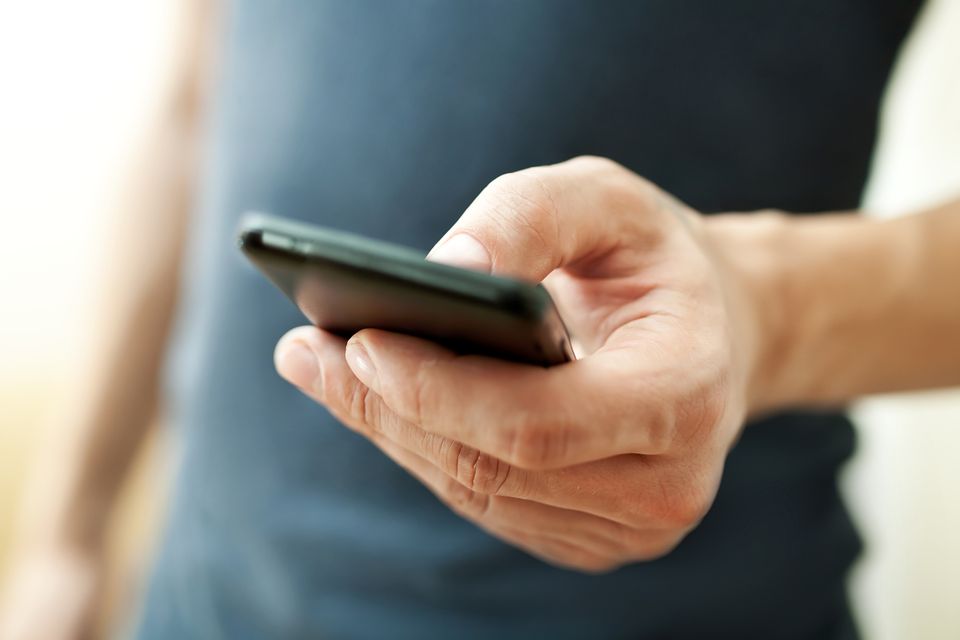Steve Dempsey: Apps are eating the internet
For media outlets, apps offer the opportunity to recruit highly engaged users (Stock picture)
When you've a few moments to yourself what do you do? Put your feet up and read a good book, turn on the telly, listen to music? If ComScore is to believed, these activities are going to become rarer. Why? Because downtime is increasingly becoming screen time. And screen time, in turn, is increasingly becoming app time.
In fact, apps are eating the entire internet according to ComScore's 2016 mobile app report. Over the past three years, total digital media time spent has grown 53pc, with smartphone apps driving most of that growth. Mobile apps now account for almost 60pc of total digital time spent. And it's apps owned by the usual online suspects that claim the lion's share of engagement.
Eight of the top ten apps are owned by either Facebook or Google. Facebook and Facebook Messenger are the top two apps by unique visitors. Facebook boasts 150 million monthly users, who spend 13 hours in the app per month. The Facebook app can be found on the home screen of a staggering 46pc of all smartphones. The next five most trafficked apps are YouTube, Google Maps, Google Search, Google Play and Gmail.
News apps account for a 7pc of share of mobile app time by category. ComScore's report found that all categories follow the same pattern: a Pareto distribution, featuring one clear market leader, a handful of strong secondary players, and a long tail of other smaller apps. In US terms, the clear market leader in news apps is the New York Times, accounting for 45pc of time spent in news apps. The Washington Post was found to account for 26pc, the Daily Mail for 13pc, and from then on the long tail does what long tails do - tails off.
For media outlets, apps offer the opportunity to recruit highly engaged users. The mobile web allows them to reach audiences at scale. But the challenge is to convert a proportion of this large audience to news app addicts.
But news outlets and marketers need to know that driving downloads ain't easy.
ComScore found that the average smartphone user downloads two new apps per month. While nearly half of all smartphone users don't download any at all. Previously, getting featured on an app store was seen as a sure-fire way to guarantee new users. But the app stores are declining in influence and acquisition is now also driven by recommendation and advertising.
There are other reasons why getting users to adopt your app is tough going. Increasingly, any new apps that users do download are put into folders, rather than left in a prominent home-screen position. Also, users have become less likely to allow push notifications from new apps.
So building a habitually used app takes a novel idea and a big budget. How many new apps broke into the top 25 in the last year? One: Groupon.
From a purely marketing perspective though, the unprecedented screen time that apps are delivering offers unprecedented opportunities to reach consumers. Mobile accounts for 25pc of total media consumption time when you include TV, print and all the rest, but only 12pc of advertising spending. So the money has yet to follow the consumer.
But marketers should know that every app has a different user base and different rules of engagement. A one-size-fits-all approach isn't going to cut it. Anyone serious about getting their message on the smaller screen, and into the minds of consumers, has to do a whole lot more than repurpose creative from print or TV.
And smartphone apps offer more than just an opportunity to serve ads on handsets. They can also offer tools that help consumers along the path to purchase. Map apps can help consumers find premises; social media can help consumers share recommendations; solid e-commerce apps drive sales. Apps from retailers like Amazon, Walmart and eBay all feature in the top 25 mobile apps by unique visitors.
One question, however, is whether we are reaching peak app saturation? That's unclear. We may, however, be reaching peak smartphone penetration. The sales of smartphone units are slowing dramatically, after years of high growth. Once the novelty wears off, will users return to music, the TV or a good novel? Traditionalists may want to turn away now: my guess is that they're more likely to open apps from Spotify, Netflix or social media.
Join the Irish Independent WhatsApp channel
Stay up to date with all the latest news















